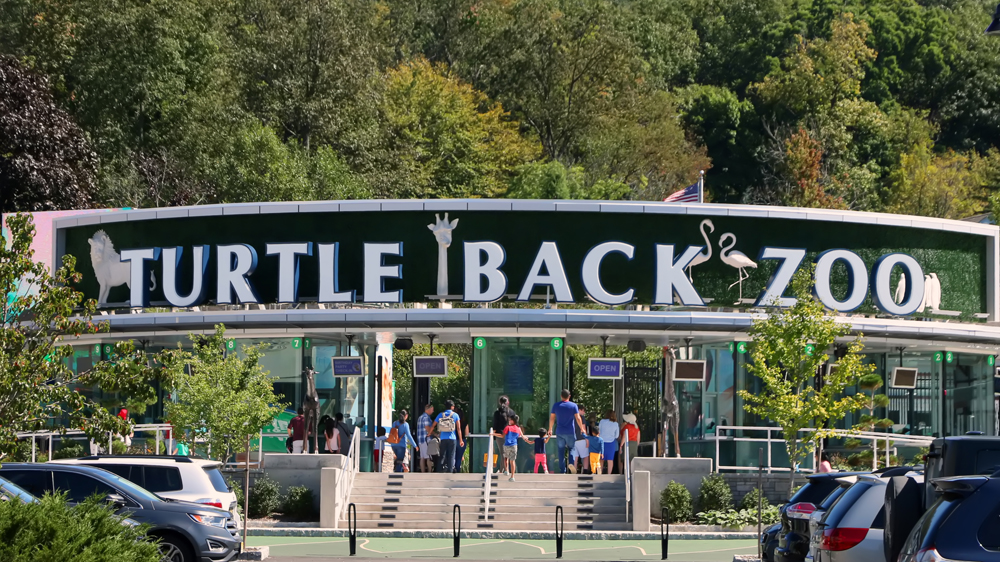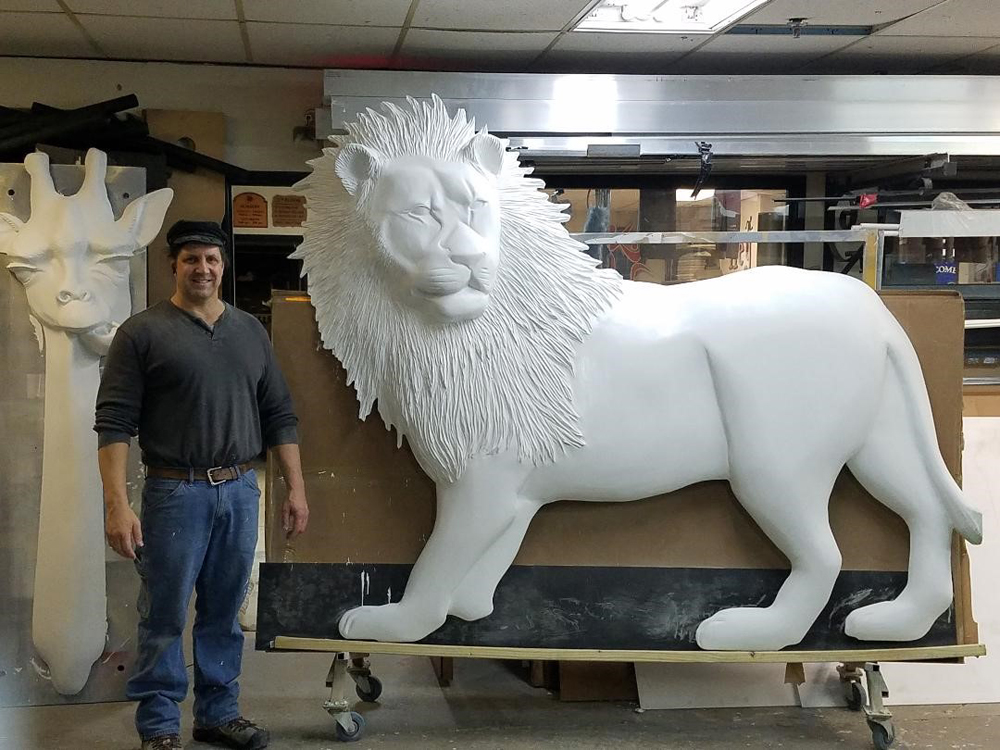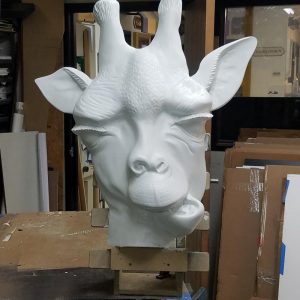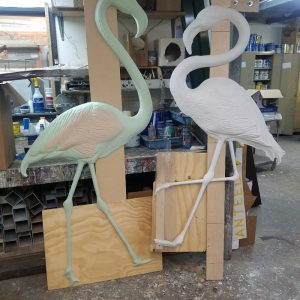When it comes to the king of the jungle, the lion certainly needs no introduction. But in this case, the artist behind the hand-carved lion (as well as a menagerie of other sculpted animals) at the Turtle Back Zoo in West Orange, New Jersey does.

Meet Mike Holst, owner of American Woodcarving, a full-service sign shop based in Wayne, New Jersey that specializes in all sorts of high-quality carved, wooden, and custom signs and sculptures, along with lighted signage and lettering. Holst started American Woodcarving in 1998 after ten years teaching at the American Woodcarving and Art School.
Holst has been a sign maker and a carver for quite awhile now (beginning back in 1988). However it was his work magnificently hand carving the lion and other animals currently on display at the recently renovated entrance of the Turtle Back Zoo that keep garnering him attention.
The Turtle Back Zoo project took root thanks to Holst’s long-standing relationship with architect Greg Comito, the principal at Comito Associates. After Holst designed and built a hand-carved turtle for the zoo that exceeded all expectations, Comito partnered up with him again when it came time for a full renovation of the entrance.
In addition to providing LED-illuminated pan face letters for the front of the curved entrance, Holst was also commissioned by Comito to hand carve practically a zoo full of animals—a lion, a giraffe, several flamingoes, and a waddle of penguins.
“[Comito] told me what animals he wanted to use here, so I went online and looked at a ‘bazillion pictures’ of all these animals until I found a lion that was standing sideways but had his head in profile looking directly at you. So I used it as my model,” he explains.
In Adobe Illustrator, Holst draws on top of the image to make his silhouettes. “I use this as the basis of starting my layering and then calculate where the layers are going to fall,” he says.
Holst has been using HDU since 1994, though he was initially ultra-resistant; ultimately the benefits of this material over wood won him over. “I’ve found it has a much easier, smoother surface, and its hand carving characteristics are very unique,” he says.
Taking two-inch-thick sheets of fifteen-pound CORAFOAM® HDU from DUNA USA and transforming them into the king of the jungle was not going to be any easy task, so Holst started the process with an oversize piece of CORAFOAM for his sculpture and cut out the profile on his 5-by-12-foot Multicam CNC router. Additional layers were glued together to build up thickness (eight inches at the tip of the nose).

Next Holst applied rough contouring through the use of an electric chainsaw with a short carving bar. “I used a chainsaw here because it was the fastest method of getting as much off as I could as quickly as possible. The goal is to get the material off as fast as you can, and how you do so is inconsequential. I used to tell my students that I would even use a lawnmower if it meant it would be faster,” he laughs.
A total of seventy hours alone went into carving the lion, and all the other animals were carved with the same attention to detail and care. “We decided we would just use the neck and head of the giraffe here,” says Holst. “We concluded that if we tried to put the whole giraffe up there, then it would look just completely out of proportion with the other animals.”
Additional sculpting of the CORAFOAM animals was performed using traditional wood-carving tools, mallets, and chisels.
Holst prefers to rough sand and then prime the entire piece before beginning the final detail work in order to identify highs and lows in the carving. Done in this manner, flaws become apparent and can be addressed early in the process. Holst did the final detailing with finer hand tools.
The lightweight carved animals were hoisted up onto the roof platform before the new illuminated lettering was added. Holst says there is a “wicked, crazy” behind-the-scenes detail that aided in installation.
“The back of the lion is concave to match the curvature of the entrance background,” he reveals. “We hollowed out the middle of the back, which was a very complicated process. But it fits flush on both ends of the background where the head and tail are.”
This project ended up being a roaring success for everyone. “It was a lot of fun to work on as an artist, as well as a welcome challenge,” says Holst.










